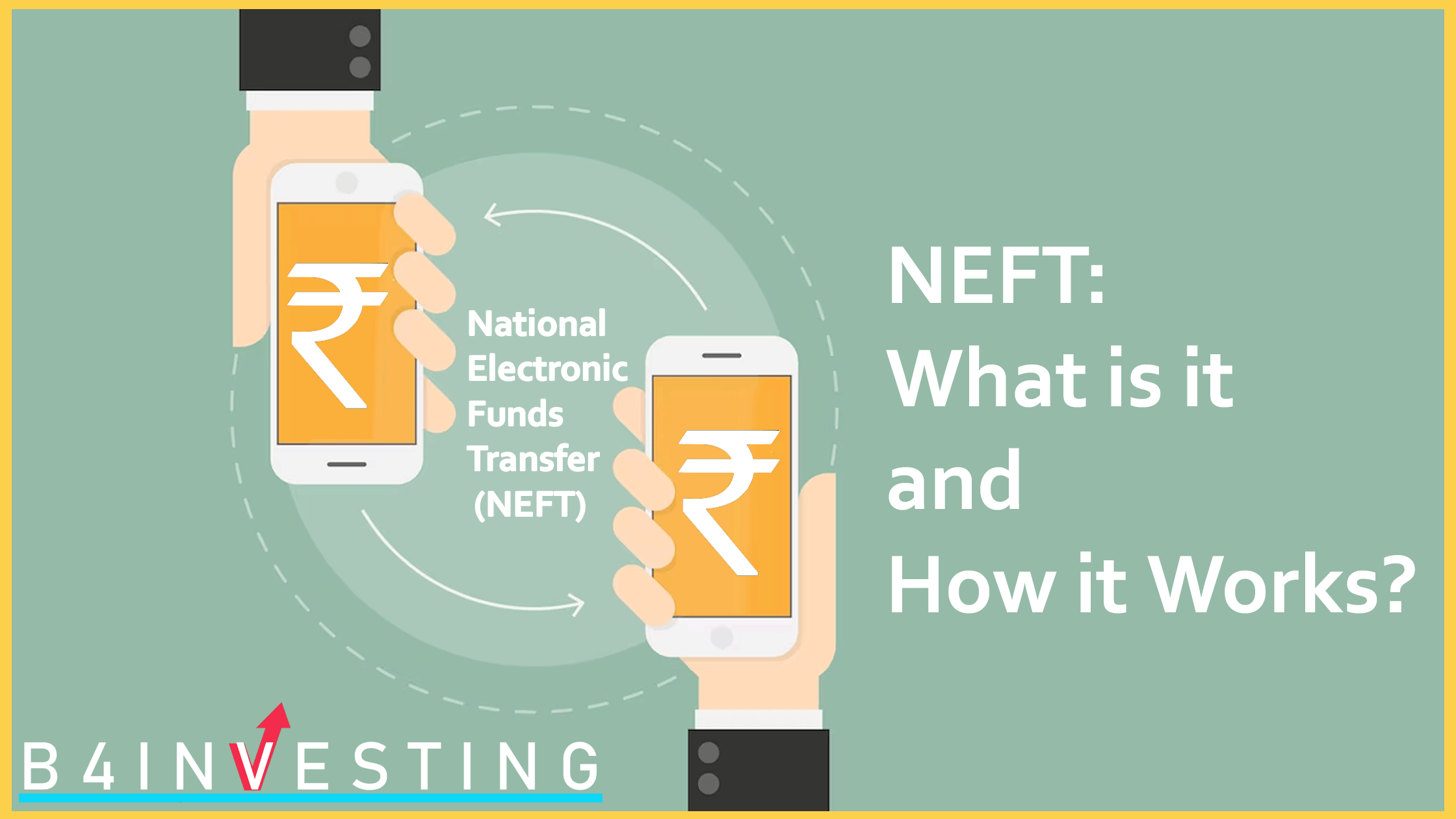
NEFT: What is it and How it Works?
Banking plays an essential role in every person’s life. Bank is considered to be safe place where we save our hard earned money. Online banking has made payment and receipt of money easy without actually filling the cheque, withdrawal form. And the most important thing is you can transfer your money without going to bank. So, no need to stand in a long queue to transfer money. National Electronic Funds Transfer (NEFT) is one such method to transfer money online.
What is NEFT?
National Electronic Funds Transfer (NEFT) is a mode where a person can transfer funds online. NEFT is introduced by the Reserve Bank of India (RBI). It quickly transfers money between banks throughout India. But a bank branch must be NEFT-enabled to be able to transfer the funds to another party.
When can you perform NEFT transactions?
Earlier, the NEFT would be performed only between 8 a.m. to 7 p.m from Monday to Friday and 8 a.m. to 12 p.m on Saturday. But, in December 2019, the Reserve Bank of India (RBI) has introduced the all-new NEFT payment system that is active and up 24×7 and 365 days a year. This is done to promote digital transactions and the global integration of Indian financial markets.
You can place an NEFT request at any time. The NEFT request will be sent to a queue. All the NEFT requests in the queue will be cleared once every hour.
Read more: Classification of Banking System in India and how do banks work with RBI?
What are the advantages of using NEFT system?
- You can transfer fund through NEFT 365 days at any time.
- To transfer funds through NEFT, the beneficiary account has to be added to internet baking portal and settlement is done in a secure manner.
- The beneficiary need not visit a bank branch for depositing the paper instruments. Person can initiate the fund transfer from his / her home / place of work using internet banking, if such service is offered by his/her bank.
- No charges to savings bank account customers for online NEFT transactions.
- Besides funds transfer, NEFT system can be used for a variety of transactions including payment of credit card dues to the card issuing banks, payment of loan EMI, inward foreign exchange remittances, etc.
- The transaction has legal backing.
- There are no limits on the amount of NEFT transactions.
Does NEFT have a transfer limit?
You can transfer minimum amount starting from Re.1. RBI has not set maximum limit for fund transfer. For cash transactions, a person can transfer up to Rs.50,000 per transaction. But banks have set their own upper limit. For example, HDFC Bank has set the upper limit of Rs.25 lakh per day per customer ID via online NEFT.
What are NEFT Transaction Charges and Fees?
- The receiver does not need to pay anything at receivers bank; no charges for beneficiaries.
- Remitter needs to pay transaction charges as per below.
| Transfer Amount (in ₹) | Transaction Charges (in ₹) |
| Up to 10,000 | 2.5 + GST |
| 10,000-1 lakh | 5 + GST |
| 1 lakh-2 lakh | 15 + GST |
| Above 2 lakh | 25 + GST |
Read more: Strength of Currency
What is the procedure for NEFT transfer?
Step 1: Log on to the internet banking page of your bank.
Step 2: Choose the ‘Fund Transfer’ option in the home screen.
Step 3: Choose the ‘NEFT’ option on the funds’ transfer page.
Step 4: Choose the beneficiary from the list to send money.
Step 5: If you wish to add a new beneficiary, click on the ‘Add Beneficiary’ button on the page. Enter details such as account number, name, type of account, IFSC, bank branch.
Step 6: Verify the entered details and confirm.
Step 7: Enter the 4-digit OTP you receive on the registered mobile number to confirm the beneficiary addition.
Step 8: The beneficiary added will be ready for fund transfer after the prescribed time mentioned by bank.
Step 9: Choose the beneficiary, select the bank account from which funds must be transferred, enter the amount to be transferred, and click the ‘Confirm’ button to initiate the transaction.
What is Indian Financial System Code?
Indian Financial System Code (IFSC) is an alpha-numeric code. This unique code identifies a bank-branch participating in NEFT payment system. It is a 11-digit code with the first 4 alpha characters representing the bank, the 5th character is 0 (zero) and the last 6 characters representing the branch. IFSC is used by the NEFT system to identify the originating bank, destination banks and branches and also to route the messages appropriately to the concerned bank branches.
FAQ
How long does an NEFT transfer take?
All NEFT transactions can be settled immediately or within a few hours.
What is NEFT maximum limit?
There is no limit or maximum amount for NEFT Transactions.
Which is faster RTGS or NEFT?
NEFT transactions take around 2 hours to be processed, while RTGS transactions are processed immediately in real time.
Which is cheaper RTGS or NEFT?
RTGS costs more than NEFT Transactions. So if you want to transfer large sums of money real time RTGS is better but for small amounts NEFT is a Better Option.

